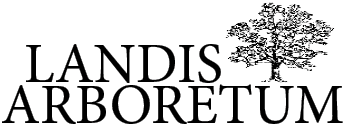The annual Audubon Christmas Bird Count (CBC) is conducted from December 14th to January 5th with the purpose of engaging the public and providing data to scientists. Participants count every bird they see or hear in a 15-mile radius and record where and when they observed them. Everyone, from amateur hobbyists to professional ornithologists, is encouraged to participate in order to provide data on populations and habitat health. Participants can join an organized local count or simply count the birds they see at their feeders within the time period.
The Arboretum’s nature educator, George Steele, has been participating in the CBC for 30 years and conducts a yearly bird count at Landis. The results of these counts are compiled by locale, and the numbers are available for scientists to review, providing critical ground work numbers for estimates of local populations and overall habitat health.
The CBC provides a unique opportunity for citizen scientists to participate in meaningful research. The data tabulated by everyday people are essential for professional scientists. “It's a great way to socialize with likeminded people,” George said. “It's a treasure hunt for adults, and kids too. I've been on several counts where children have participated.” Fun for the whole family while providing an ecological service? Talk about a win-win!
Speaking of treasure hunts, when asked about the most rare or interesting birds encountered during a CBC George said,“Generally what makes for an interesting bird is a bird that should have migrated but hasn't. For example, one year we found a gray catbird. In all of the counts I've done I’ve never had another one.”
“Sometimes it’s fun to get all the members of a bird family,” he explained. “The best example of that is to get all six species of woodpeckers that winter in New York . . . . Another example is to get as many of the raptors as possible.” Birds do show up in the darnedest places, he admitted, and he recalled encountering a red headed woodpecker, a species not generally found in this area even in the summer!
Asked about advice for the budding birder, George noted, “First locate a count. The National Audubon Society website will have CBC information. If you happen to live in a count circle, you participate simply by setting up bird feeders, counting the birds that use them on the count day, and reporting numbers to the count compiler.”
Citizen science is a small but significant way to understand and appreciate the complex web of nature. The Christmas Bird Count offers all of us a chance to contribute to the work of monitoring and maintaining bird and habitat health.
